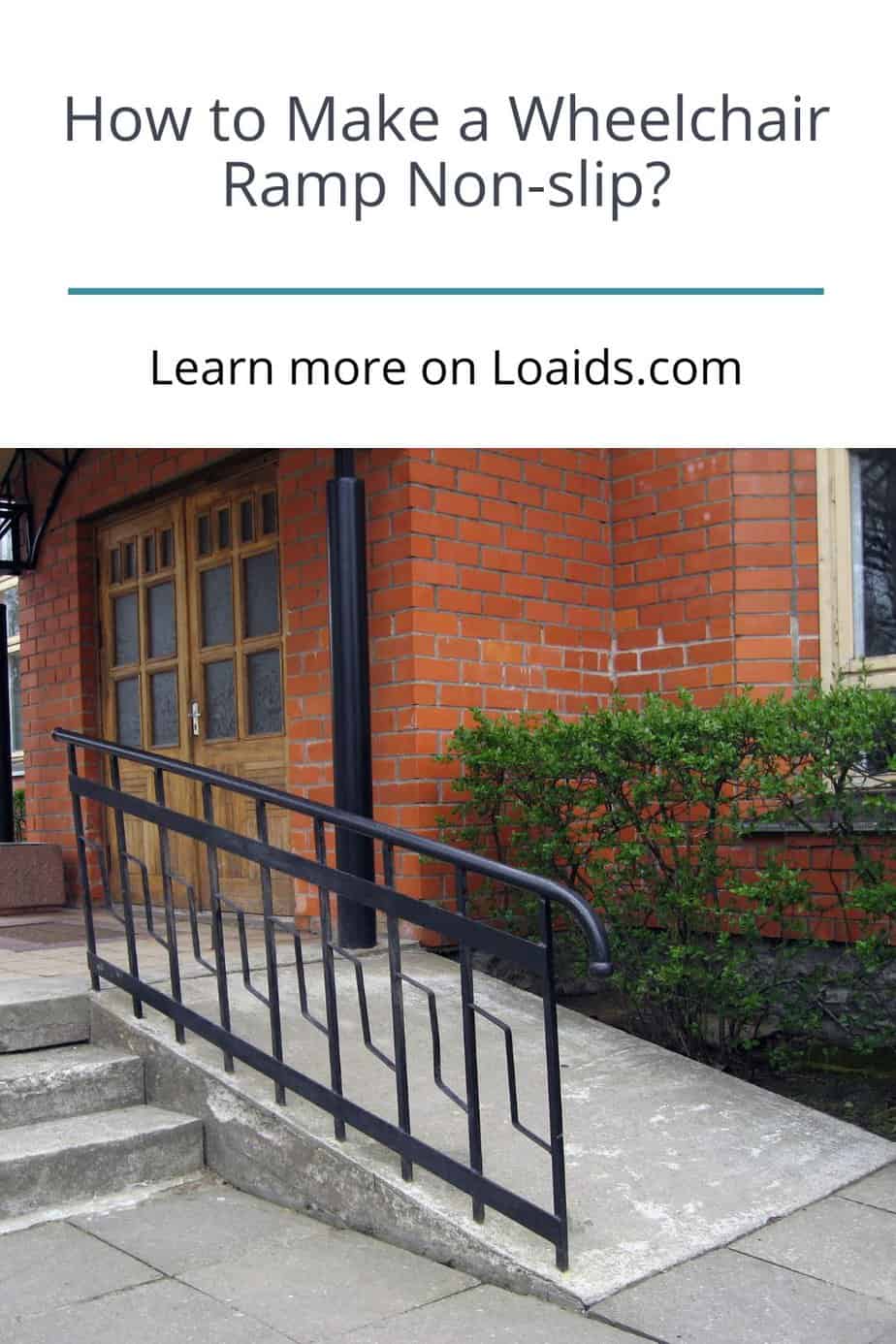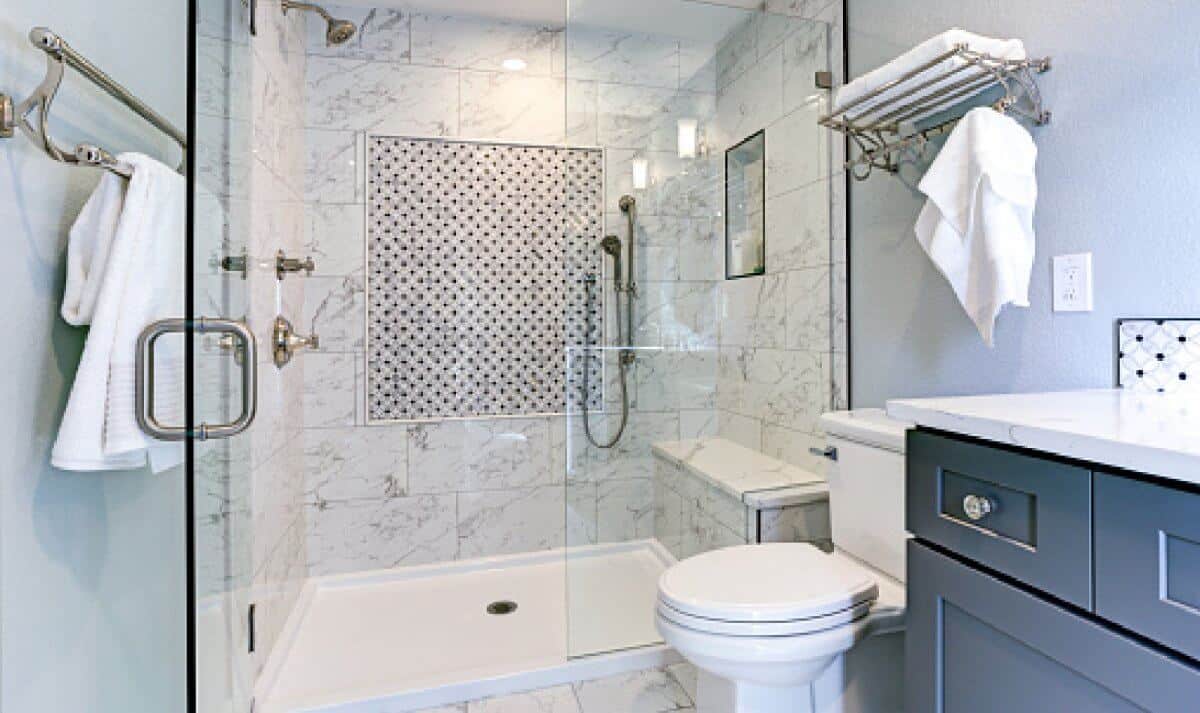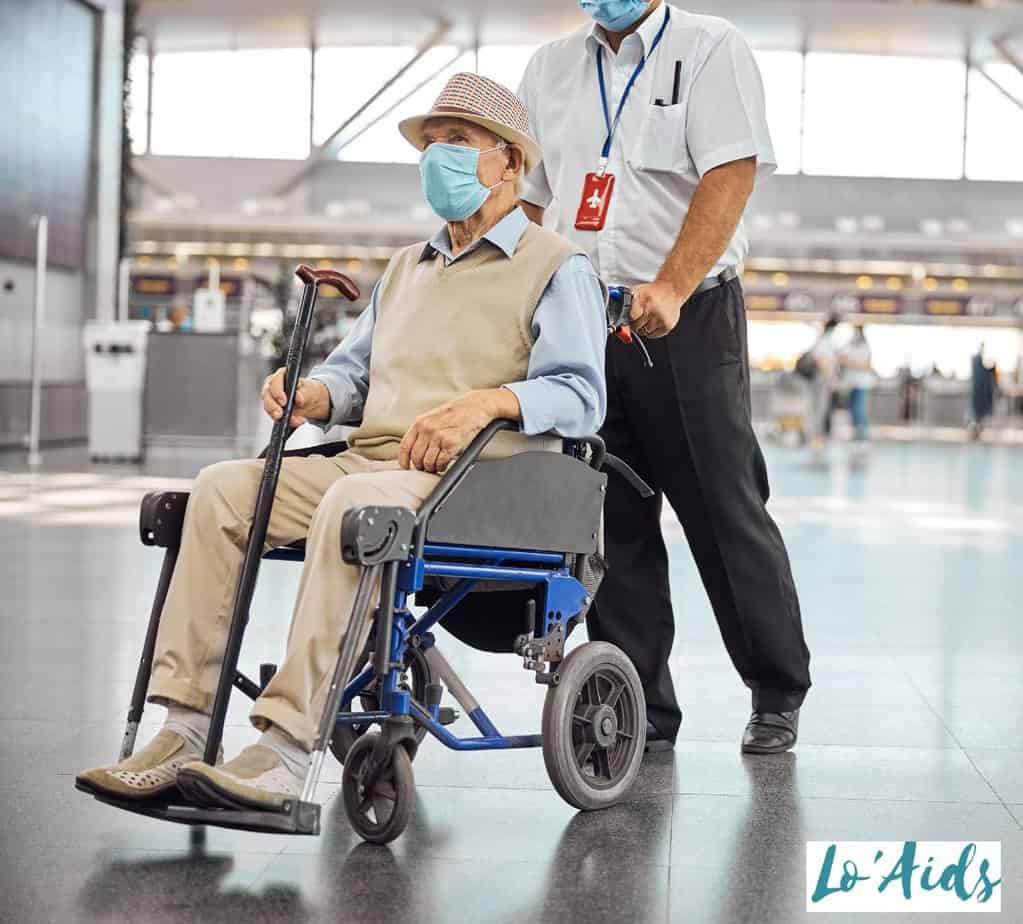If you recently bought a ramp, you might want to know how to make a wheelchair ramp non-slip.
Ramps offer accessible entrance options for wheelchair users. However, these access ramps aren’t the safest mobility aid. Studies show that slippery ramps are a common cause of injury for users (1).
So how do you make an access ramp safer? I will answer that and more in this article.
Table of Contents
Key Takeaways
- Wheelchair ramps are an excellent accessibility solution but can also be dangerous.
- Top-notch grit paint, anti-slip tape, and even rubber mats can make a wheelchair non-slip.
- While short-term solutions have a lower consumable cost, it’s better to seek permanent solutions.
What Makes a Wheelchair Ramp Slippery?
Are slippery ramps slippery by design, or does something else make them slippery? The answers are Yes and No.
Some ramps are just slippery by design, while other factors make some ramps slippery.

If you have a slippery ramp, any of the below factors could be to blame.
1. Weather Conditions
Rainy weather conditions can make even the most dependable non-slip surface slippery. Wet conditions often make it harder to use wooden ramps.
Wood ramps absorb any water, which makes them highly slippery. Such ramps also become more slippery when exposed to snow (2).
The wheels of wheelchairs will thus have a more challenging time moving on such a surface.
2. Material
If a wheelchair ramp is made with slippery materials, then there’s no way the ramp becomes an anti-slip surface.
While some manufacturers use anti-skid material, most will use regular material, especially for less costly ramps.
3. Design
By design, I’m talking about the ramp slope. If the ramp slope is too high or too low, you automatically require effort to move your wheelchair.
4. Wear and Tear
You could have bought a proper ramp with enough non-skid coating. But the wear and tear of daily use can make it lose some or all of its friction. That makes it a recipe for dangerous slips.
5. Poor Installation
Poor wheelchair access ramp installation is something else that can also make a ramp unsafe. Proper installation should follow the appropriate safety measures besides being in line with the building codes.
Now that you know what is causing your wheelchair to slip on the ramp, let’s see how you stop it.
How Do I Prevent Slippage on My Wheelchair Ramp?
Don’t know how to make your wheelchair ramp non-slip? I tried most of them and can guarantee they work, even if some proved to be only temporary solutions.
1. Paint and Anti-Slip Additives
Adding friction to an outdoor ramp isn’t complicated. Most times, the solution lies in using simple anti-slip additives with anti-slip paint.
Anti-slip paint covers the wood surface and prevents water absorption typical in wet weather. These high-traction paints are ideal for metal, wood, and aluminum ramps.
If you can’t get special deck coatings, mix regular paint, sealants, or stains with gritty additives, then apply them on the ramp.
Here is a video showing how to apply the paint:
2. Grip Tape
Another simple way to achieve non-skid surfaces on ramps is by using grip tape. The tape adhesive sticks onto the ramp and increases friction for safe passage.
Adhesive safety tape is relatively easy to get at your local supplies store.
3. HandiTreads Deck Treads
If you don’t fancy non-slip paints, installing a HandiTreads Deck will help make the wheelchair ramp safer. Though they are a more expensive option, they are more convenient.
For instance, they will need little surface preparation when installing. You will also easily clean away any snow on the ramp. Another plus is they are a lifetime guarantee.
Only the initial cost is high since they won’t need any maintenance.
4. Grip Strips
Grip strips are heavy-duty non-slip pieces that instantly increase traction on your ramp.
Not only are the strips rigid, but they are also durable and will reduce slips at a relatively fair initial cost.
Grip strips are ideal for concrete ramps and most other ramps. Once you get the strips, follow the instructions here to add them to your ramp.
5. Environmental Factors
If branches are overhanging your outdoor ramp, pruning or removing them will help boost traction.
In wet weather, the branches direct water to the ramp, besides blocking air circulation.
If you have a wooden ramp, you’ll notice that the slickness doesn’t disappear since the sun doesn’t reach it.
4 Tips to Make Ramps Safer
1. Ensure Proper Ramp Installation
Pay attention to things like the ramp slope when installing the ramp. Proper installation will help you reduce slippage along the road and prevent ramp accidents (3).
Quick installations, while a desirable option, sometimes leave room for problems.
2. Regular Sweeping
Even after adding the different non-skid materials on a ramp, sweep them regularly. Sweeping will remove small slippage causes that could spell trouble.
3. Consider Permanent over Temporary Solutions
Non-slip paints and grip tapes or strips, while effective, are merely short-term solutions. Aluminum treads, while more expensive, are a more permanent solution.
4. Compliance with ADA Requirements
Adding ADA-compliant guardrails and other safety features will make the ramp safer for disabled individuals and other users.
FAQs
What can you do to make a wheelchair ramp non-slip?
Grit paint, tape-based adhesives, grip tape, treads, and grip strips are all things you can add to a ramp to add friction.
What can you put on a ramp to reduce ice?
Salt or any substitute will work perfectly to remove ice on a ramp. Snow mats are also an additional option to try.
How many layers of paint do I need to make a wooden ramp less slippery?

Though you can use any layer of paint you like, I recommend two layers. That way, you’ll be sure the paint will work as you intend.
Conclusion
I hope you now understand how to make a wheelchair ramp non-slip. Wheelchair ramps will have numerous benefits if you can make them safe enough.
Slippage being a common cause of accidental falls, ensure your ramp has as much traction as possible.
A layer of grit paint, non-slip grip tape, or high-quality HandiTreads Deck Treads will lead to a rough, slip-resistant surface.

What option do you think is best for making a wheelchair ramp slip-resistant? Please share it with us in the comments down below.
Resources
- 1. Guidance on the Stability of Wheelchairs [Internet]. 2004. Available from: https://unece.org/fileadmin/DAM/trans/doc/2004/wp29grsg/GRSG-ig-access-03-10.pdf
- 2. Lemaire ED, O’Neill PA, Desrosiers MM, Robertson DG. Wheelchair Ramp Navigation in Snow and Ice-Grit Conditions. Archives of Physical Medicine and Rehabilitation [Internet]. 2010;91:1516–23. Available from: https://www.sciencedirect.com/science/article/abs/pii/S000399931000599X
- 3. Xiang H, Chany A-M, Smith GA. Wheelchair related injuries treated in US emergency departments. Injury Prevention [Internet]. 2006 [cited 2019 Sep 24];12:8–11. Available from: https://www.ncbi.nlm.nih.gov/pmc/articles/PMC2563507/





